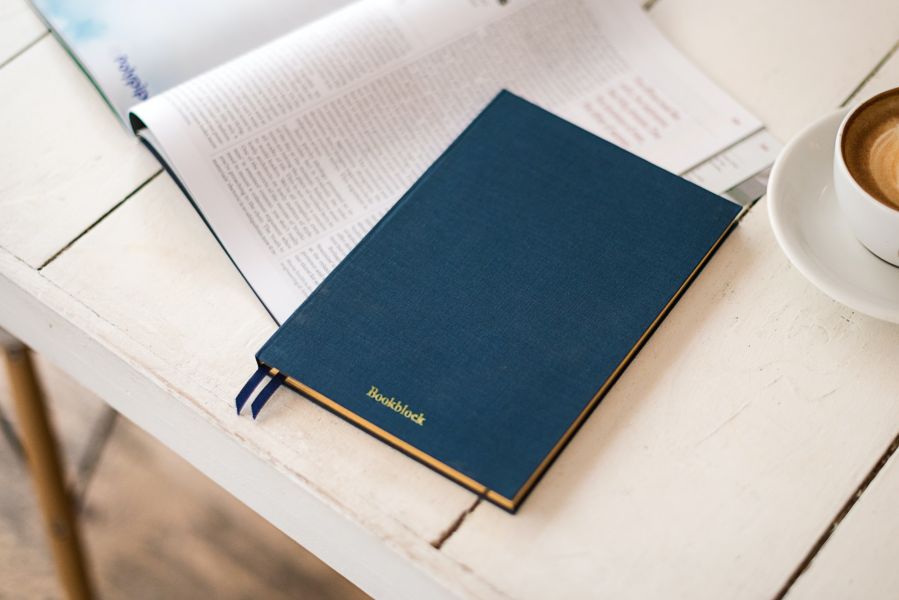初中英语教学模板设计1
Unit 8 I’d like some noodles.
I. Analysis of the Teaching Material
1. Status and function
The topic of this unit is about food. The students will learn how to order food or
take-away. In this unit, the students will be able to use “would like” to express their need
for food and learn how to ask others? information and provide their personal information
during the process.
2. Teaching aims and demands
1). Knowledge objects
a. To master how to order food or take-away;
b. To master the modal verb “would” and “what” questions.
c. To master the usage of countable nouns and uncountable nouns.
2). Ability objects
d. To use “would like” to talk about the need for food.
e. To improve students? ability of communication and social practice.
3). Sensibility objects:
Let the students experience the happiness of learning English, cultivate their ability
to do things and foster the spirit of cooperation in group activities.
3. Teaching difficult points and focus:
1)To learn the names of food and the countable and uncountable nouns.
2)To learn how to order food.
3)To use “would like” to express their need for food and learn how to order food.
II. Target Language
1) what would you/he/they like to eat?
I?d /He?d /They?d like some...
2) What kind of noodles would you/he/they like?
I?d/He?d /They?d like beef and tomato noodles
IV. Vocabulary
noodles, beef, chicken, mutton, potatoes, tomato, cabbage,carrot, dumplings, porridge, soup, green tea, orange juice, would like…
V. Teaching Time
45 minutes
VI. Teaching Procedures
Step 1. Warm up.
1) Show some pictures about sports and let the students answer the questions below:
After doing these sports, what?s your feeling?
Are you tired ?
Are you hungry?
2) Let the students thinking the question: If you are hungry, what would you like to eat?
3) Show some pictures of food that they have learned.
Step 2. Lead into.
1)T: “No food left! But don?t worry, let?s go to the restaurant to have a big meal.
Look! What can you see in the restaurant?
Yes, There are many kinds of food there. You can choose whatever you like”.
2)Show the new words.
3)Questions:
A: What kind of vegetables/meat/food/drink would you like?
B: I?d like some…
Let the students to learn the names of food and the countable and uncountable nouns. Let the students make some dialogue.
Step 3. Let’s chant.
Step 4. Noodle House.
1) Show some pictures about noodle specials.
meat+vegetables → special1/special2….
(let the students to guess the meaning of the word ?special?)
2) Make dialogue
A: What kind of noodles would you like?
B: I?d like…and…noodles.
Step 5. Pairwork and guessing game
1) Pairwork . (Make dialogues.)
2) Game: Who is the winner?
Ask a boy and a girl come before the blackboard, and then ask two students to make a
dialogues. The boy or the girl who find the right special will win one score….after
some pairwork, see who is the winner? The boy or the girl.
3) Guessing game.
Step 6. Role Play (In the Nodle House)
A customer and a waiter. (Make a dialogue)
Let the students express their need for food and learn how to order food.
Step 7. Summary
Step 8. Apothegm
Step 9 A Flash → “I’m hungry”
初中英语教学模板设计2
课前准备
教师:准备游戏时所用的图片(食物、蔬菜、动物)。
学生:准备表演时所需道具(服装、假发)。
教学设计
Step One :Present the sentence patterns.
1. Play a game “How many words do you know?”(利用小游戏调动学生的积极性,同时通过对冠军的介绍引出本课。)
Teacher: After the study of the first three starters, I think most of the students must have known a lot of words. How many words do you know? Let’s play a game to see who know? Let’s play a game to see who knows the most.
(Divide all the students into several groups and show a picture(图片略)to them with the computer. Every group can choose two students to join. They are asked to come to the blackboard and write down the words in 30 seconds.)
(Group 2 is the champion group. They can write 11 words.)
2. Introduce the champion group to the class.(引课方式贴近生活,学生易于接受)
Teacher: Congratulations, now Group 2 is the champion. But I don’t know your names. Would you like to introduce yourselves to us?
S1& S2:Yes.
S1:Hello.My name is Li Lei. Nice to meet you.
Ss: Hello, Li Lei. Nice to meet you ,too.
Ss: Hello! What’s your name?
S2:I’m Sun Ping. How do you do?
Ss: How do you do ?
Step Two: Drills.
1. Make introductions.(通过句型的操练使学生更加熟练掌握所学的句式。)
Teacher: The new term begins. Everyone will meet many new classmates. Do you want to make friends with them? If your answer is “yes”, please introduce yourself in your group.
Example:
Sa: Hello! I’m Li Lei. What’s your name?
Sb: My name’s Zhang Feng. Nice to meet you.
Sa: Nice to meet you, too. And what’s your name, please?
Sc: Lin Li. How do you do?
Sa:How do you do?
2. Listen and number the conversations.
Teacher: Today I have good news for you. Three new students will come to our class. They are from other countries. Do you want to know them? Let’s listen to the recording of 1b in Section A.
(Students listen to the tape and give the right answers.)
Step Three: Make friends.
1. Make new friends.(用谈话的方式完成任务,生动活泼,同时更容易向学生进行美德教育。)
Teacher: Now everyone has some new friends. Do you want others to know them? Do you want more friends? Let’s introduce our new friends to others, OK?
Ss: OK.
Example:
Sa: This is my new friend. His name is Sun Nan.
Sb: Hello, Sun Nan. Nice to meet you.
Sc: Nice to meet you, too. Look! This is my new friend. Her name is He Lu.
Ss: How do you do?
Sd: How do you do?
(Students can stand up and introduce their friends to others freely. They can greet each other warmly. Everyone in the class can have more friends. They can also know something else about them.)
2. The New comers.(以表演的形式完成,使课堂气氛达到高潮。)
Teacher: Just now I said three new students from other countries would come to our class. Now, look! They are here. Let’s give them a warm welcome.
(Three “foreign”students come in and all the students clap warmly.)
Teacher: It’s their first time to come to China. Would you like to listen to their introductions?
Ss: Yes.
(Three students can make introductions and act out the dialogue vividly.)
Step Three: Sum up.
Some students are asked to sum up this lesson. It is how to make new friends and how to greet them. It is very important in the daily life.
Homework
“How do you meet new visitors at home?
初中英语教学模板设计3
教学目标
1)知识目标:
A.学习并掌握指示代词: this、that;
B.学习What引导的特殊疑问句;
C.学会Yes/No问句及其简单回答;
D.学会句型:---How do you spell pen? P-E-N.
2)能力目标:
A.能辨认物品的所有者;
B.根据不同场景,能用英语对物品的所属进行提问和回答;
C.能识别不同句式的语调(陈述句,疑问句);
D.培养学生听、说、读、写的能力及创新思维能力.
3)情感目标:
A.通过寻找主人的游戏和失物招领等活动,培养学生拾金不昧的良好的品德及健康向上的人格;
B.通过开展小组活动,指导学生积极与他人合作,相互学习、相互帮助,共同完成学习任务.
教学重点、难点
重点:A.掌握批示代词this、that用法;
B.掌握特殊疑问句和Yes/No问句及其简单回答.
难点:学会写寻物启事和失物招领.
课时安排
第一课时Section A 1a-1c
第二课时Section A 2a-4b
第三课时Section B 1a-2c
第四课时Section B 3a-4 Self-check 1-3
Period One
课前准备
教师:录音机,图片,物品实物.
学生:实物(学习用品).
教学设计
Step One: Warming up.(通过复习形容词性物主代词,把学生引入学习英语的
情境中。)
Learn the chant.
T:Let’s sing the chant together.
my 是我的,your是你的,男他的是his,女她的是her; 名词前面常站岗,限定所属有功劳.
Step Two: New words.(利用实物教学,使得教学过程自然、形象。)
1. Present the new words.
T: Boys and girls, look at this please. What’s this in English?
(Teacher holds a pen in the English.)
S1:A pen.(Ss may say it in English.)
T: Yeah. It’s a pen. And what’s this?
(The teacher holds an eraser in the hand.)
S2:It’s an eraser.
(Teach the other words such as “pencil, book, eraser, ruler, pencil case, backpack, pencil sharpener, and dictionary” in the same way.)
2. Practice the new words.
T: Now, please look at the pictures in your books. Can you put the words with the objects in the right pictures? Write the letters next to the words, please.(Give Ss about two minutes to finish 1a.)
T: OK,let’s check the answers. Who can tell us the answers?
S2:…
Step Three: Present the drills.
1. Present the drill “Is this…?Yes/ No,it is/isn’t.”(利用实物引入句型,使用不同人的物品来引入形容词性物主代词和名词的搭配的用法。)
(Hold the teacher’s pen.)
T:This is my pen.Is this your pen?
S1:No,it isn’t.It’s your pen.
T:(Hold the student’s pen.) This is your pen. Is this your pen?
S1:Yes,it is. It’s my pen.
T:(Hold a girl’s pen.) This is her pen. Is this your pen?
S1:No,it isn’t. It’s her pen.
T:(Hold a boy’s pen.) This is his pen. Is this your pen?
S1:No,it isn’t. It’s his pen.
T: Thank you.
2. Practice the drill “Is this your…?” in pairs with your own school things.Pay attention to the use of my, your, his or her.(利用学习用品操练句型,并加深对物主代词的理解。)
初中英语教学模板设计4
一、课题:
《PEP 小学英语》五年级下册 Unit 6 A field trip(B Let's learn Let's play)。
二、课题说明:
本课的教学内容是有关户外各项活动的单词教学,这与学生日常生活密切联系着,容易为学生所理解和接受。且这些活动是学生们所乐意参加的,教学时可充分抓住这一特点来安排教学内容使课堂气氛活跃一些。教学重点是掌握5种活动词汇的正确读音。
三、课时说明:
本案例是小学五年级下册第六单元的第四课时,学生在前面已学过 drinking water 等活动的词汇和 What is/are …doing? They are ... He/She is ... 的句型。因此,这节课的教学任务是如何在学习新知识的基础上,巩固、拓展和利用所学的旧知识,真正达到学以致用、融会贯通的目的。
四、学生情况说明:
通过前面几单元的学习,同学们对 What ...doing? 和人们正在进行活动的描述 He/She is... They are... 已经有了较好的掌握,这为本单元的教学提供了有利的基础。本单元的教学内容与学生的实际生活息息相关,因而本单元的教学内容对学生来说不难理解。关键是如何在课堂中将分散的语言点进行整合、拓展,使之形成一个有机的整体,即把孤立的单词教学放置于一定的情景教学之中,达到让学生在实际生活中能准确、灵活地运用的目的。在教学时,老师要通过创设情景,利用多媒体教学手段,拿出实物,开展灵活多样的教学活动,将新旧知识有机结合,对本单元知识加以强化,从而让学生更好地掌握和拓展 A field trip 这一话题。
Unit 6 A field trip
B Let's learn Let's play
第四课时
教学重点:
1. Let's learn 部分的动词短语的 ing 形式:counting insects,collecting leaves,writing a report,playing chess,having a picnic。
2. 在情景中使用对话中的句子,并能恰当的替换句中的动词短语。
3. 听、说、读、写动词短语:counting insects,collecting leaves,writing a report,playing chess,having a picnic。
4. counting 和 collecting 的正确发音示范和指导。
教学难点:
1. 词汇量较大,有些短语不易掌握:counting 和 collecting 的发音较难且易混淆。
2. 动词短语的 ing 形式:强调 writing 和 having,加 ing 要去掉字母 e,再加 ing。
课前准备:
1. 教学过程中所需的录音(Let's learn, Let's play)、课件
2. 实物:象棋、国际象棋、树叶
3. 投影仪
4. 书写表格(在课前发给学生)
教学过程:
一、Warm up(热身)
大家一起唱活动:唱一唱 (教学参考时间:2-3分钟)
教师播放五年级下册第五单元 Let's chant 部分歌曲。
学生跟录音演唱歌谣。(Listen and repeat)
二、Review(复习)
1. 老师先美美地喝杯子中的一口水,What am I doing? Ss: You're drinking water.
2. 出示课件图片,请学生复习 A Let's learn 部分的词组。
引导学生 Using the sentences: What is ...doing ? He/She is ...
三、Presentation(新课呈现)
活动一:学一学
1. 教师出示一群人野营的图片,T:What are they doing? S: They are having a picnic. 教读该词组。
2. 出示国际象棋,教师问学生:What is this? 引导学生回答“chess”。如果没有学生知道,教师可以领读 chess。出示中国象棋,教师问:This is Chinese chess, Can you play chess? 引导学生回答:Yes, I can play chess. 或者 No, I can't. 出示图片,T: What is Jone doing? S: He is playing chess. 使学生能够用完整的句子来回答。
3. 教师拿出一张 Report, T: What is this? S: It is a report. T: What is Sarah doing? S: She is writing a report.
4. 出示一片树叶,问 What's this? 回答:It's a leaf. 拿出一袋树叶,问 What are they ? 回答:They are leaves.(树叶的单复数在前面已教过,这是对所学内容的复习)然后教师把树叶夹在书本中,T: I am collecting leaves. 看课件图片,T: What is he doing? S: He is collecting leaves. 教师带读该短语,请学生试着读出新的单词短语。
5. 出示 watching insects 的单词短语和图片,问:How many insects can you see? T: Let's count together. There are six insects. 教师引导学生说出 counting insects 教师带读单词。
6. 最后,在四线格上展示五个动词短语。
教师引导学生注意总结:T: Look at the board, can you find something different?
单词结尾是不发音的字母e的时候,加ing 要把e去掉。
7. 教师播放 Let's learn 部分的录音,学生打开课本 listen and repeat。
Students read one by one,老师纠正错误的发音。
活动二:小小探究家
Make a chant
For example: Chen Jie, Chen Jie,
What is Chen Jie doing?
Counting insects, counting insects
She is counting insects.
以上例子在课件中展示。
尽量让学生编出更多的chant,并请同学自编自吟。
活动三:我是小老外(Work in pairs──看图编对话)
请学生准备后,上台展示。A: What is ...doing?
B: He/She is ...
B: What is ...doing?
A: He/She is ...
活动四:趣味游戏 Let's play──Can you guess?
请一位同学到讲台前,蒙上眼睛,叫台下的另一个同学说:I am ... 全班同学齐问:What is he/she doing? 蒙眼睛的同学使用这样的句型:...is (collecting insects).
四、Consolidation and extension
拓展一:
练习:完成活动手册P52 第1小题
学生打开书,看表格。教师播放录音,学生完成表格。
教师请学生订正答案。
教学目的:加强学生书写练习,巩固所学动词短语。
首先,请学生到讲台前表演动作。
然后,请其余学生完成表格, 找出他(她)在干什么?Let's find out: What is he /she doing?
请学生根据自己填写的表格进行汇报,教师可以给予句型引导:... is ...
最后在投影仪上展示优秀学生的书写表格。
活动目的:呈现 Let's learn 部分的画面,并提供学生语言运用的场景。让学生通过完成表格的形式来检验自己的学习效果。
五、板书
Unit 6 A field trip
What is he/she doing?
He/She is...
counting insects
collecting leaves
writing a report
playing chess
having a picnic
初中英语教学模板设计5
能力目标:能听懂,会说要求的单词和句子
情感价值:进一步提高对英语学习的热情,培养更加稳定的学习兴趣。
能积极主动地参与课堂活动,在情景对话中大胆开口,主动模仿。
教学重点 学习和练习正确书写四会单词和四会句子.
教学难点 正确使用代词this和that。
课时数 2
教学过程 1.热身 / 复习(Warming-up / Revision)
1)播放课本附录中的歌曲I want to be your friend, 渲染课堂气氛。
2)把小动物面具挂在墙上,让学生说出它们是什么动词,是谁的。
2.新课导入(Presentation)
1)展示本课教学挂图,让学生观察,并提出问题:
What are Peter and Lisa doing?
What are they talking about?
2)播放本课录音,让学生听,然后讨论自己的猜测是否正确。
3)再放录音,让学生仔细听:谁扮演bear?谁的头饰找不到了?最后找到了吗?
4)指导学生跟读录音。
5)让学生四人一组分角色表演会话。
6)鼓励学生戴面具到讲台上来表演。
3.趣味操练(Practice)
1)教师将全班划分成6~8个小组,每组发一张白纸,每张白纸的最上面都写有“失物招领处”。要求每组画出3~4种物品,供其它组认领。
2)每组分成两部分,一部分当失主去其它组找丢失物品,另一部分留在本组提供物品。用所学句型进行交际活动。
3)播放本课投影片,让学生边看边配音。
4. 拓展活动(Additional activities)
1)回家听本课录音,模仿语音语调。
2)把本课对话改编或故事,讲给父母听。
推荐文章
河南高考排名195560左右排位理科可以上哪些大学,具体能上什么大学2024-06-08 12:22:13
吉林外国语大学和湘潭大学兴湘学院哪个好 附对比和区别排名2024-06-08 12:17:15
江西工商职业技术学院在黑龙江高考历年录戎数线(2024届参考)2024-06-08 12:13:44
甘肃高考排名5480左右排位理科可以上哪些大学,具体能上什么大学2024-06-08 12:10:50
四川文化艺术学院和天津城建大学哪个好 附对比和区别排名2024-06-08 12:07:58
江西高考排名71510左右排位理科可以上哪些大学,具体能上什么大学2024-06-08 12:05:17
小学英语教学方法有哪些2023-08-15 02:50:36
英语学科教学目标计划2023-08-21 08:08:14
译林英语五年级上册unit5教案五篇2023-08-15 02:23:32
人教七年级下学期英语教学反思范文2023-08-14 15:03:09
小学英语教学方法有哪些2023-08-15 02:50:36
英语学科教学目标计划2023-08-21 08:08:14
译林英语五年级上册unit5教案五篇2023-08-15 02:23:32
新学期英语教学研修计划2023-08-13 11:59:23
小学三年级英语课程教案范文五篇2023-08-19 04:53:22
英语口语考试资料必备2023-08-18 01:55:49





